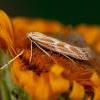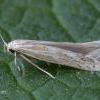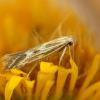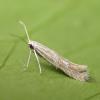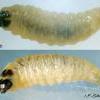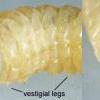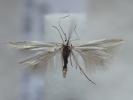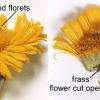35.061 Ptocheuusa paupella (Zeller, 1847)
Status and Distribution
Local to locally common in southern England south of a line from the Wash to the Severn, very local further north and west with a few records from Nottinghamshire, Yorkshire, north Wales and south-east Ireland. A historic record from Lancashire (1887) has not been repeated despite searches for the larvae in this area.
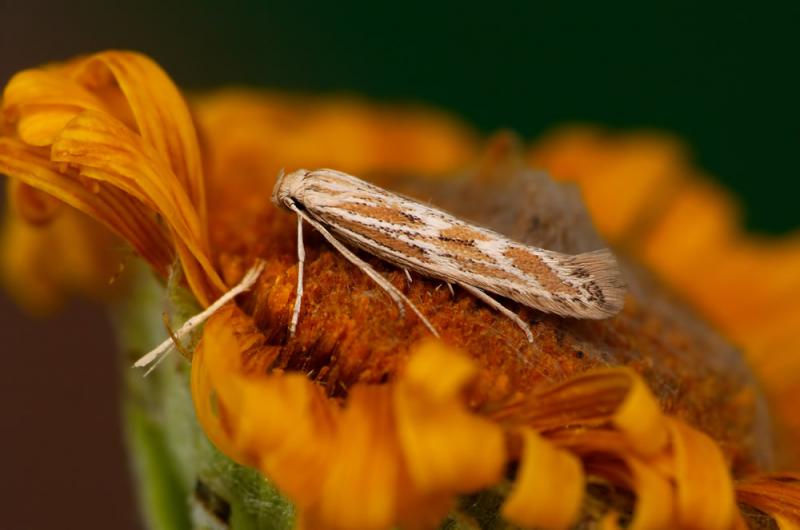
Provisional map
Foodplant and Larval Feeding Signs
Pulicaria dysenterica (common fleabane), see plant distribution map, Limbarda (formerly Inula) crithmoides (golden-samphire), occasionally on Mentha sp. (mint) and Centaurea nigra* (common knapweed).
* This foodplant by E. S. Bradford from two sites in Kent.
In Europe also found on Inula conyza (ploughman's-spikenard) and I. montana.
Larval feeding in common fleabane causes a small number of discoloured raised florets in the seedhead.
Habitat
Damp grassland, ditches, damp woodland rides, the edges of salt-marshes, rivers, canals and damp bases of muddy coastal cliffs.
Finding the Moth
Larva: feeding in the seedheads during July and again from mid September, overwintering fully fed through to the following May. A patch of raised and discoloured florets indicates its presence.
Adult: can be found resting on the flowerheads of the larval foodplant, flies at dusk and comes readily to mercury vapour light.
Similar Species
Although slightly variable in the extent of its ochreous-yellow markings on the white base colour, fresh specimens should not be confused with any other species in the British Isles.
Double brooded, from late May to early July and late July to early September. Variable, according to the season, sometimes present in mid-July.
Earliest: 25th May 2004 (VC113)
Latest: 5th October 2003 (VC12), an exceptionally late date with the next earliest on 23rd September.

